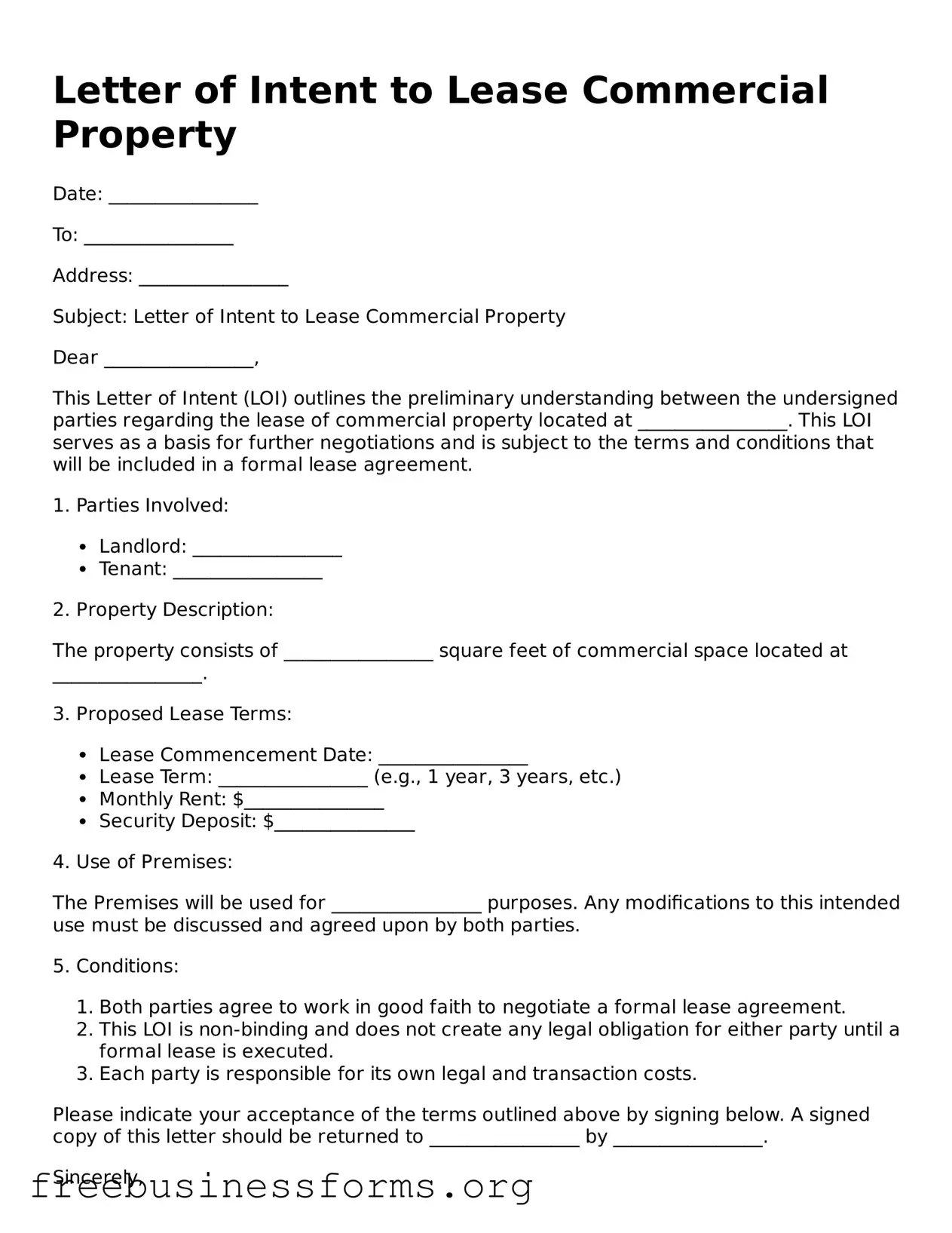Letter of Intent to Lease Commercial Property
Date: ________________
To: ________________
Address: ________________
Subject: Letter of Intent to Lease Commercial Property
Dear ________________,
This Letter of Intent (LOI) outlines the preliminary understanding between the undersigned parties regarding the lease of commercial property located at ________________. This LOI serves as a basis for further negotiations and is subject to the terms and conditions that will be included in a formal lease agreement.
1. Parties Involved:
- Landlord: ________________
- Tenant: ________________
2. Property Description:
The property consists of ________________ square feet of commercial space located at ________________.
3. Proposed Lease Terms:
- Lease Commencement Date: ________________
- Lease Term: ________________ (e.g., 1 year, 3 years, etc.)
- Monthly Rent: $_______________
- Security Deposit: $_______________
4. Use of Premises:
The Premises will be used for ________________ purposes. Any modifications to this intended use must be discussed and agreed upon by both parties.
5. Conditions:
- Both parties agree to work in good faith to negotiate a formal lease agreement.
- This LOI is non-binding and does not create any legal obligation for either party until a formal lease is executed.
- Each party is responsible for its own legal and transaction costs.
Please indicate your acceptance of the terms outlined above by signing below. A signed copy of this letter should be returned to ________________ by ________________.
Sincerely,
_________________________
Landlord's Signature: ________________ Date: ________________
Tenant's Signature: ________________ Date: ________________
This document may be subject to the state laws of ________________.
